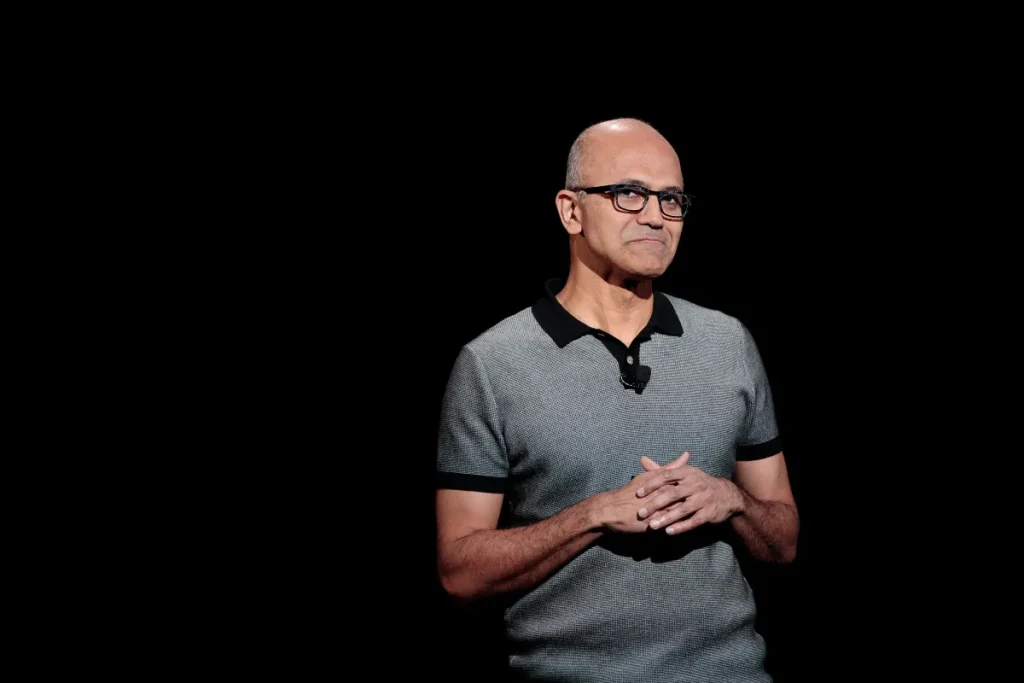Microsoft’s Strategy to Resolve Chip Issues Involves Relying on OpenAI’s Support

Image Credits:Drew Angerer
Microsoft Partners with OpenAI for Advanced Chip Development
Microsoft is making a strategic move by aligning closely with OpenAI to enhance its semiconductor initiatives. According to Bloomberg, this collaboration comes at a crucial time when Microsoft is facing stiff competition from tech giants like Google and Amazon.
The Strategic Arrangement
The partnership primarily involves OpenAI developing cutting-edge AI chips in collaboration with Broadcom. As a result, Microsoft will gain comprehensive access to these advancements, a significant advantage for the company. Satya Nadella, Microsoft’s CEO, shared insights during a recent conversation with podcaster Dwarkesh Patel, emphasizing that as OpenAI makes innovations at the system level, Microsoft will benefit fully from those enhancements.
“This collaboration allows us to adopt their designs and extend them to suit our needs,” Nadella stated. This illustrates Microsoft’s commitment to not only enhance its current capabilities but also innovate in areas previously considered challenging.
Securing Intellectual Property Rights
In a revised partnership agreement, Microsoft has successfully secured intellectual property rights to OpenAI’s chip designs. This gives the company a crucial edge, ensuring that it can leverage state-of-the-art technology for its services. Furthermore, Microsoft will maintain access to OpenAI’s AI models until 2032, ensuring a steady pipeline of advanced capabilities. However, there is a notable exception: OpenAI intends to develop and sell its consumer hardware independently.
This carve-out may reflect OpenAI’s ambitions in the consumer market and the potential it sees in directly interacting with customers. By focusing on its own hardware, OpenAI may aim to enhance its product offerings and better compete in its respective sectors.
The Challenges in AI Chip Development
The collaboration brings to light a critical reality in the technology sector: designing and manufacturing next-generation AI chips is both complex and financially demanding. Many companies have struggled with this undertaking and have faced numerous hurdles along the way. Instead of navigating these challenges alone, Microsoft is strategically choosing to leverage OpenAI’s expertise and established successes in this domain.
By partnering with a leader in AI technology, Microsoft hopes to accelerate its own objectives. The financial investment in chip development can be daunting, making collaboration a more practical option. This partnership may serve as a dual benefit, not only enhancing Microsoft’s capabilities but also providing OpenAI the opportunity to focus on creating leading-edge AI technologies without the financial burden of independent semiconductor development.
A Competitive Edge Against Rivals
Microsoft’s strategic shift underscores its response to the competitive pressures it faces from companies like Amazon and Google. While these rival firms have made significant strides in AI and chip development, Microsoft is proactively working to catch up and ultimately lead in this space. This partnership with OpenAI presents an opportunity to level the playing field, gaining access to advanced technology that could drive innovation across its services.
Moreover, integrating OpenAI’s leading technologies into Microsoft’s cloud services and other platforms could significantly enhance user experiences, solidifying its position as a leader in enterprise solutions. This collaborative approach is also indicative of a growing trend where tech companies recognize the value of partnerships in sparking innovation and overcoming complex engineering challenges.
Future Implications of the Partnership
The implications of this partnership extend beyond immediate chip development. By gaining insights and access to advanced AI technologies, Microsoft can create more powerful and intelligent applications tailored to the needs of businesses and consumers alike. This could lead to breakthroughs in various fields, including artificial intelligence, machine learning, and data analytics.
As AI continues to evolve, the need for high-performance chips will only increase. Microsoft’s investment in this area through its partnership with OpenAI positions it well for future growth and leadership in the AI revolution. The power of AI chips will drive advancements in many sectors, including healthcare, finance, and more, and Microsoft aims to be at the forefront of these innovations.
Conclusion: A Pragmatic Move
In conclusion, Microsoft’s partnership with OpenAI represents a pragmatic approach to overcoming the inherent challenges of semiconductor development. By embracing collaboration, Microsoft is poised to accelerate its growth and enhance its technological capabilities. This strategic alliance not only benefits Microsoft but also positions OpenAI to continue making significant strides in AI technologies. As this partnership unfolds, the tech world will undoubtedly be watching closely to see how it shapes the future of computing and artificial intelligence.
Thanks for reading. Please let us know your thoughts and ideas in the comment section down below.
Source link
#Microsofts #plan #fix #chip #problem #partly #OpenAI #heavy #lifting





